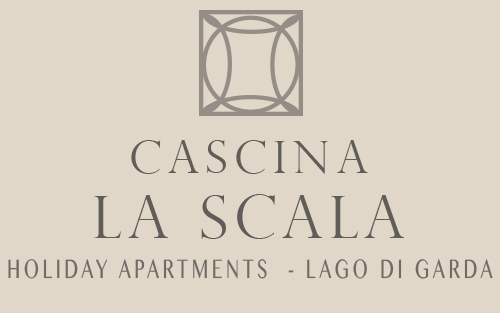
Salò is the most important town on the Western Riviera of Lake Garda. The city lies on the slopes of Mount San Bartolomeo on the banks of a wide gulf. In the old town you can admire many elegant palaces and ancient monuments, wich were built during the Venetian domination and you can have a relaxing walk on the promenade that runs along the gulf; you can also go hiking the mountains above Salò and enjoy the panoramic view on the Lake that includes Isola del Garda, Isola of San Biagio (known also as Isola dei Conigli = The Island of Rabbits), the cliffs of Manerba, and the peninsula of Sirmione. You can also enjoy the many events and the cultural happenings that take place in Salò all over the year. In short, Salò is the ideal place for a very relaxing holiday.
Salò was originally a roman foundation. Since the the 14th and the 15th Century the town has been part of a federation of towns of the territory along the western lakeshore of Lake Garda (from Limone down to Desenzano) and the Valsabbia area, called Riperia Lacus Gardae Brixiensis.
During that period, the federation did not want to form an alliance with Brescia nor with Verona deciding instead to request the help of Venice. Due to the distance of Venice, this strategy did not guarantee the independence of the area and Salò became a stronghold of the Milanese Visconti family. In 1377 Beatrice della Scala, the wife of Bernabò Visconti, wanted Salò to be the chief leu of the area.
In 1426 the federation lake spontaneously joined the Republic of Venice, where they remained for the following three centuries. Over the years, Venice gave large autonomy to this province that remained a de facto independent area and was given both the titles of Magnifica Patria (Magnificent Homeland) and Figlia primogenita della Serenissima (firstborn daughter of the Serenissima). The Council of the federation and its other institutions remained all centred in Salò (which gained importance and influence), although Venice sent there a governor, who was given the titles of Provveditore (Superintendent) and Capitano della Riviera (Captain of the Riviera) and the power to act as penal judge for the whole Riviera. A podestà coming from Brescia also resided in Salò and was entitled to act as civil. Besides farming and trade, also the linen manufacturing was a significant item of the local economy.
In 1796 the Treaty of Campoformio marked the end of the Venetian republic and consequently ended the prominence of Salò as the capital of the western Riviera. After that, the area became an Austrian territory and then joined the Cisalpine Republic and the Napoleonic Kingdom of Italy (1805–1814).
After the Napoleonic Era, Salò became part of the Austrian Kingdom of Lombardy–Venetia from 1815 to 1859, when it became part of the Kingdom of Sardinia; then, it was included in the Kingdom of Italy in 1861, after having received the honorary title of Città (City) with a royal decree in1860.
On October 30th 1901 an earthquake struck Salò after which it was built the promenade.
From 1943 to 1945 Salò was the de facto capital (seat of government) of Benito Mussolini's Nazi-backed puppet state, the Italian Social Republic, also known as the Republic of Salò.
On November 24th 2004 an earthquake of Richter magnitude 5,38 struck Salò.
The Duomo di Santa Maria Annunziata (cathedral of the Annunciation to Saint Mary). The construction of the church, dedicated to the Annunciation of the Virgin Mary, was begun in 1453 by the architect Filippo delle Vacche. It is built in the Late Gothic style and its façade remains unfinished. The main entrance into the church is through the great portal executed between 1506 and 1508 by Gasparo Cairano and Antonio Mangiacavalli, who were among the chief exponents of Renaissance sculpture in Brescia. The church preserves within it paintings by Romanino, Moretto da Brescia, Zenone Veronese and Paolo Veneziano. There is a grand polyptych of gilded wood dating from the end of 15th Century.
MuSa. The new art gallery of Salò host many permanent art and science collections, including the Civico Museo Archeologico (the Archeological Museum), the Civica Raccolta del Disegno (the Drawing Collection) the Museo del Nastro Azzurro (the Blue Ribbon Museum), the meteosismic observatory, and many other temporary art exhibitions.
The City Hall, once seat of the Council of the Magnifica Patria. Part of the palace was rebuilt after the earthquake of 1901.
The Music Hall. The building was built during the 19th Century and is being renovating after a long period of decadence.
Palazzo Terzi-Martinengo. It is located in Barbarano. It was built during the 16th Century by the marquese Sforza Pallavicino, captain of the Venetian Republic. It preserves whitin it a big park with wonderful fountains. Unfortunately, the palace is a private property, so it is not open to the public.
The Lazzaretto di San Rocco (lazaret of Saint Rocco). It was built during the 15th Century and it is located near the monumental cimitery.
The cimitero monumentale (monumental cimitery). It was built by the architect Rodolfo Vantini (1792-1856) next to the lazaret of Saint Rocco.
Gasparo da Salò (Salò, 1540 – Brescia, 1609), inventor of the violin.
Carlo Pallavicino (Salò, 1640 ca. – Dresden, 1688), Italian composer.
Angelo Landi (Salò, 1879 – Salò, 1944), Italian painter.
Angelo Zanelli (San Felice del Benaco, 1879–Rome, 1942), Italian sculptor.
Luigi Comencini (Salò, 1916 – Roma, 2007), Italian director.
Salò is part of the Alto Garda Bresciano Park. The Mount San Bartolomeo, which overlooks the town, is crossed by many natural trails up to its peak.